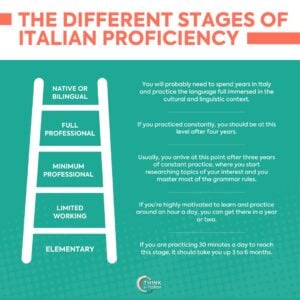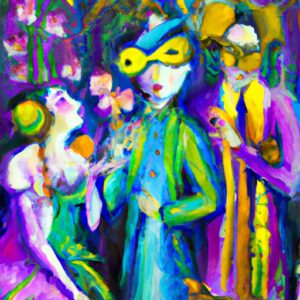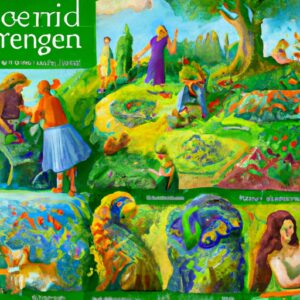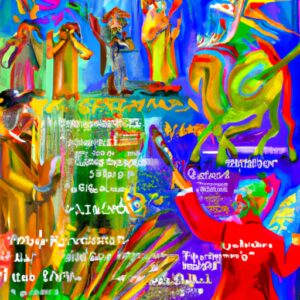How to say hello in Italian?
This is one of the most important things you’ll need when speaking with natives.
Here’s how to choose the right Italian greetings!
Why learn Italian Greetings
It doesn’t matter if you’re a beginner or an advanced speaker; it’s also great to look over the facts and see if there’s anything else left to learn.
The basics are always important, and every Italian person you meet will be thrilled that you made an effort and learned more about their language and culture.
You will be able to keep the conversation running and make a lot of friends.
Italian people are very polite, and they like whoever they interact with to be the same.
In Italian, it’s important to know phrases for good morning or good afternoon.
As they are incredibly friendly people, it would be nice for any foreigner to know what to use.
When saying buon giorno or buona sera, the Italians may shake hands and show respect to each other.
How do you greet someone in Italian?
Many Italians are used to touching people when greeting.
Not only do they shake hands, but some also grab people’s arms or pat their backs.
This applies especially to Southern Italy.
This can surprise or annoy people from other cultures.
When in doubt, play it safe and say hello with words!
Most common Italian Greetings
Depending on your relationship with the person, you will need to choose a formal or informal expression, and the same stands for the time of day.
Knowing the right expression at a specific moment can really improve your communication with the natives.
Here, you will see the best and most common ways to say hello in Italian, in both formal and informal ways, so you’re always prepared.
Ciao – hello in Italian
The most popular hello in Italian is ‘ciao.’
It’s a simple ‘hello’ and ‘bye.’ and can be used at basically any time you need it.
‘Ciao’ can be used in many informal situations, especially when you are with your family and friends.
When you’re talking to someone you don’t know very well, you may want to use a different expression.
Buon giorno
Buon giorno means ‘good morning’ or ‘good day,’ and it’s very straightforward.
It can be used as both good morning and goodbye, and it works great in formal and informal situations.
Use it at the restaurant, hotel, and even in your business meetings.
Dottore, buongiorno, sono Marina.
Good morning, Doctor. It’s Marina.
If you want to explicitly wish someone a good day, however, it is appropriate to use a slight variation on this expression which is Buona giornata! (Have a good day! or Have a nice day!)
Unlike buongiorno, which can be used to greet or say farewell to someone, buona giornata is exclusively used to part ways with someone or to say goodbye over the phone.
Ci vediamo domani. Buona giornata!
See you tomorrow. Have a nice day!
Buon pomeriggio
This is a good way to say good afternoon to someone, but it’s not usually a casual way to say it.
You may see it on television and in movies because it’s very formal, so try using something different when you go out with your Italian friends.
Signore e signori, buon pomeriggio e benvenuti.
Ladies and gentlemen, good afternoon and welcome.
Buona sera
Buona sera can be used as “good evening” in Italian.
You can use it anytime after lunch, and people will think you’re incredibly cordial.
Sarebbe stato normale ed educato augurarmi la buona sera.
It would have been normal and polite to wish me a good evening.
However, if you want to communicate your wishes for a pleasant evening, you need to use a little variant of this word, which is Buona serata! (Enjoy your evening! or “Have a pleasant evening!)
Buona serata is only used when parting ways with another person, but buona sera can be used to greet or say farewell.
Ci sentiamo domani. Buona serata!
We’ll talk tomorrow. Have a nice evening!
Buona notte
This greeting means good night, and it’s not exactly a bedtime expression as the American one.
Italians use this whenever greeting someone at night for dinner. It’s a great way to meet the whole group.
Vi ringrazio e vi auguro buona notte.
I thank you, and goodnight.
Piacere
Piacere means nice to meet you. It’s a very formal expression, so you can definitely use it when you meet a new co-worker or your girlfriend’s mother.
Piacere di conoscerti, Tiffany.
It’s a pleasure to meet you, Tiffany.
Come stai? /Come va?
Although it’s a question, it’s the best way to casually greet your friends.
It’s not a regular hello, but you can use it with people you really know. The answers to this greeting can depend on a person’s health.
Ciao, Florence, come stai? – Tutto bene, tu?
Hello, Florence, how are you? – Everything is fine, you?
How to say hi in Italian
Salve
If you’re tired of saying ciao or buongiorno all day, here’s a warm and polite alternative that’s both official and informal.
Salve is derived from the Latin verb salvere, which means to be healthy (essere in buona salute).
In fact, the verb salutare comes from the Italian word salute (“health”), hence the English word salutation.
So, if you’re greeting a stranger in a piazza (“square”), you can say:
Salve, come va?
How are things going?
“Hey” – Ehilà, Ueilà or Ehi
These words are commonly used by Italians to express a pleasant surprise to friends and family.
Take, for example:
Ehilà, chi si rivede!
Hey, look who’s here!
But they also can serve as a warning:
Ehi, chi è entrato in casa mia?
Hey, who broke into my house?
More Ways To Say Hello in Italian
A presto
A presto is a very simple Italian greeting and it means ‘see you soon.’
It’s a very common phrase you can use anytime you leave and also as a formal goodbye in emails and letters.
Of course, it can also be used to state that you’re very close to getting somewhere.
Arrivo da te tra poco, a presto!
I’ll be at your place in a bit, see you soon.
Alla prossima
This greeting can be used whenever you are sure you’ll meet the person again.
It literally means ‘until next time.’
You can use it in school, at work, or basically, anytime you say, ‘I’ll see you again.’
Ci vediamo
Ci vediamo means ‘see you around,’ You may hear it at school or maybe just after meeting someone new.
Antonio, ora scappo. Ci vediamo.
Antonio, I must run off now. See you around.
Ti saluto/ Vi saluto
This is a very casual ‘bye’ in Italian.
It simply means ‘I salute you’ and can be used safely with your friends.
If you’re only talking to one person, make sure to use the singular form, ‘ti saluto,’ and use the plural form, ‘vi saluto,’ for when you’re meeting a group.
Amici, vi saluto.
Friends, I salute you.
Stammi bene/ Statemi bene
Whenever you want to tell someone ‘take care,’ you can use ‘stammi bene.’
You can tell this to your friend or to the whole group using the plural version.
Nonna, stammi bene.
Grandma, take care.
Arrivederci
This is one of the most common phrases, and it means ‘goodbye‘ in Italian.
The Italians use it as an ‘until we meet again.’ You can use it in any formal or informal situation.
Arrivederci, professoressa.
Good-bye, professor.
Addio
This is one dramatic way of saying goodbye, according to most movies, but it’s one of the most basic ways to say goodbye in Italian. I mean, forever!
Greeting elders and superiors
You can’t say ciao when greeting seniors or superiors; you need to sound more polite.
Likewise Spanish and French, Italian has two ways to address people: formal and informal.
In informal situations, the personal pronoun ‘tu’ is used, whereas, in a formal way, the personal pronoun ‘lei’ is used.
We use ‘lei‘ to address someone who is older than us and whom we don’t know well because the older person may be offended if we don’t.
Because ‘lei‘ is third person singular, you must conjugate the verb in the third person when addressing someone formally.
Let’s see the difference:
Ciao Mario, (tu) come stai?
Hello Mario, how are you?
Buongiorno dottor Bianchi, (lei) come sta?
Good morning dr. Bianchi, how are you?
Arrivederci is the safest way to greet elders, strangers, or anyone you’ve just met (whether in a business meeting or on any other occasion).
Avoid the expressions “ciao” and “ci vediamo.”
Instead, try one of the following:
Arrivederci, buona giornata!
Goodbye, have a nice day!
Arrivederci, le auguro una buona giornata!
Goodbye, I wish you a nice day!

If You Are In Doubt…
Remember that if you don’t know what to say, you can just say salve and arrivederci (hello and goodbye) and you’ll be courteous and appropriate in any situation.
When greeting someone in Italy, remember that gestures are just as essential as words.
Body language is also used by Italians to greet and express hospitality and happiness.
In Italy, friends greet each other by kissing twice on the cheeks or giving each other a hearty hug.
For those who have a strong sense of personal space or for those who come from places where this is not the norm, this may seem strange!
Kissing and hugging are common in Italy, but only if you have a friendly relationship or are with family members. This double kiss is used to greet someone and to bid them farewell.
If you don’t think such a gesture is suitable, a handshake will suffice.
You can greet new people by shaking their hands and stating “Piacere di conoscerti“ (nice to meet you).
You can also shake ends to say goodbye.
In Italy, as in most European countries, cheek kissing is a frequent greeting. In Italy, however, cheek kissing is reserved for welcoming friends and is less prevalent among men. To avoid accidentally touching noses, kiss the left cheek first, then the right. Handshakes are far more common when meeting someone for the first time. As you get to know the other person, you move more into the cheek-kissing territory.
How to say hello in Italian? Say Ciao!
It’s important to know how to say hello, and it’s always great to learn more and more ways to do it.
Now that you know how to say hello in Italian, make Italian friends, and use these greetings in your conversations!
By the way, do you know how to say how you are in Italian? Happy birthday in Italian? Beautiful in Italian? And thank you in Italian?
Ciao a tutti!



















